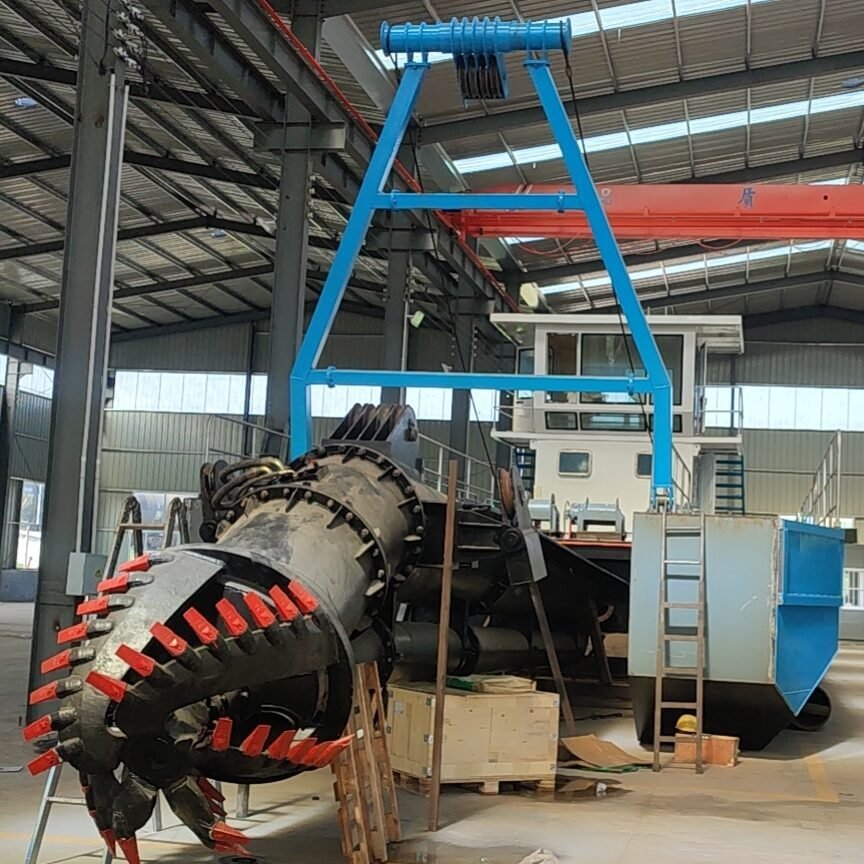
How to Choose the Right Dredger for Your Project
Keywords: Dredger, Project Selection
Understanding Your Project Needs
Selecting the right dredger for your project is a critical decision that can significantly impact the success of your operation. The first step is to clearly define your project’s requirements. Consider the type of material that needs to be dredged, such as sand, silt, clay, or gravel. Different materials require different dredging techniques and equipment. For instance, compacted clay or rock may require more powerful dredgers equipped with cutting tools, while softer materials like sand can be handled by standard suction dredgers.
Production Capacity and Project Scale
The production capacity of the dredger is another important factor to consider. This refers to the volume of material the dredger can process within a certain period. For small-scale projects, a dredger with a lower capacity may suffice. However, larger projects require dredgers with higher capacities to meet production targets within the set timelines. It’s important to select a dredger that not only meets your current needs but also allows for flexibility in case of future expansion.
Types of Dredgers and Their Applications
There are various types of dredgers available, each designed for specific tasks. Cutter suction dredgers are ideal for projects that require the excavation of hard, compacted materials. They use a rotating cutter head to break up the material before suctioning it to the surface. On the other hand, trailing suction hopper dredgers are well-suited for dredging loose materials and are often used for maintaining navigable waterways and ports. Understanding the strengths and limitations of each type of dredger is essential in making the right choice for your project.
Evaluating Durability and Material Quality
When selecting a dredger, it’s crucial to consider the durability and quality of the materials used in its construction. Dredgers operate in demanding environments, and machines made with high-quality, wear-resistant materials will last longer and perform better. Look for dredgers with reinforced hulls, corrosion-resistant coatings, and durable components that can withstand abrasive materials and harsh conditions. Investing in a durable dredger reduces the need for frequent repairs and extends the machine’s operational life.
Ease of Maintenance and Operational Efficiency
Another factor to consider is the ease of maintenance. Dredgers with accessible parts and straightforward maintenance procedures are preferable, as they reduce downtime and ensure that your operations run smoothly. Look for equipment that comes with comprehensive maintenance manuals and support from the manufacturer. Additionally, consider the dredger’s operational efficiency, including its fuel consumption and power requirements. Energy-efficient dredgers can significantly reduce operational costs over time, making them a smart investment for long-term projects.
Importance of After-Sales Support
After-sales support is another critical aspect to consider when purchasing a dredger. Reliable support from the manufacturer or supplier ensures that you can quickly address any technical issues that arise during operation. This includes access to spare parts, technical advice, and repair services. Strong after-sales support helps minimize downtime and keeps your project on track, ensuring that your investment in the dredger pays off.
Making an Informed Decision
Choosing the right dredger requires careful consideration of multiple factors, including the specific needs of your project, the type of material to be dredged, the production capacity, and the durability of the equipment. By taking the time to evaluate these factors, you can make an informed decision that ensures your dredging operations are efficient, cost-effective, and successful.
DREDGER

No responses yet